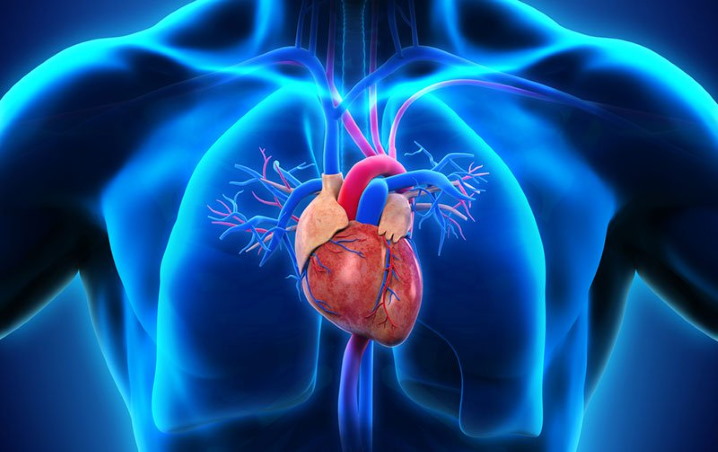How Cardiology Jupiter recommends lowering cholesterol without medication
How Cardiology Jupiter recommends lowering cholesterol without medication
Blog Article
Recognizing the Importance of Cardiology in Modern Healthcare Services
Cardiology plays a vital function in modern medical care, especially as heart problem continues to be the leading root cause of mortality worldwide. Breakthroughs in diagnostics and treatment have transformed client care, allowing earlier interventions and improved outcomes. Additionally, the change towards preventive cardiology empowers people to manage their wellness proactively. As technology remains to evolve, the assimilation of cutting-edge options might additionally redefine cardiology's effect on public health, motivating a more detailed assessment of emerging trends and their effects.
The Frequency of Cardiovascular Disease and Its Influence On Public Health
Heart illness remains the leading reason of fatality around the world, its influence extends much beyond specific people to affect public wellness systems and economic climates. The high prevalence of heart problem puts a substantial pressure on healthcare sources, requiring raised funding for recovery, treatment, and avoidance programs. Public health efforts should resolve threat elements such as excessive weight, cigarette smoking, and less active lifestyles, which contribute significantly to the climbing incidence of heart conditions.Moreover, the economic problem linked with cardiovascular disease is enormous, encompassing not only straight clinical costs but likewise indirect costs connected to shed productivity and early death. Communities face difficulties in handling these prices, typically causing disparities in health care accessibility and end results. As the population ages and lifestyle-related threats proceed to rise, the necessity for reliable cardiology treatments becomes paramount. Addressing heart disease is not just an issue of specific health and wellness however likewise an essential public wellness top priority.
Breakthroughs in Heart Diagnostics and Imaging Techniques
Recent developments in cardiac diagnostics and imaging strategies have changed the area of cardiology, improving the ability to monitor and detect heart problem. Strategies such as heart MRI, CT angiography, and echocardiography have become significantly innovative, giving detailed pictures of cardiac frameworks and functions. These methods enable the very early identification of problems like coronary artery illness, cardiac arrest, and valvular disorders.Moreover, advancements in non-invasive diagnostics, such as wearable modern technology and remote tracking tools, have actually empowered people and doctor. These tools assist in real-time tracking of heart rhythms and various other essential indications, leading to prompt interventions. In addition, synthetic knowledge is being integrated right into imaging analysis, enhancing precision and effectiveness in medical diagnosis.
Developments in Therapy Options for Heart Conditions
Recent advancements in cardiology have actually brought about significant technologies in treatment options for heart problems. These include sophisticated medical techniques that improve step-by-step outcomes and arising medications that provide brand-new methods for therapy. As the field advances, these developments play a vital function in improving client treatment and results.
Advanced Surgical Techniques
Developments in medical techniques have transformed the landscape of cardiology, supplying brand-new hope for clients with heart problems. Minimally intrusive procedures, such as catheter-based treatments, have actually significantly lowered recuperation times and healthcare facility stays. Methods like robotic-assisted surgical procedure enhance precision, permitting surgeons to navigate complicated anatomical structures with greater accuracy. Developments in imaging innovation help with real-time visualization during procedures, improving end results. Transcatheter aortic shutoff substitute (TAVR) exhibits a development in treating aortic stenosis, enabling shutoff substitute without open-heart surgical procedure. Additionally, hybrid methods that combine surgical and catheter-based approaches offer customized options for different cardiac issues. These innovative medical methods not only enhance patient safety and security yet likewise expand therapy alternatives, highlighting the important duty of innovation in modern-day cardiology methods.
Emerging Drugs and Treatments
As the landscape of cardiology proceeds to develop, arising therapies and medicines play a crucial function in improving treatment choices for heart disease. Advancements such as unique anticoagulants and advanced lipid-lowering representatives have changed the monitoring of heart diseases, substantially lowering patient morbidity and death. In addition, the development of gene therapies and regenerative medication offers promising opportunities for dealing with problems formerly regarded irreparable. Medical trials are constantly exposing the efficiency of these therapies, pressing the limits of conventional treatments. Additionally, the combination of digital health and wellness technologies helps with tailored medication, allowing for tailored therapy strategies based upon hereditary and way of life variables. Collectively, these improvements underscore the vibrant nature of cardiology, boosting client end results and redefining standards of care in contemporary medical care.
The Duty of Preventive Cardiology in Client Care
Preventive cardiology plays an essential role in patient treatment by focusing on the identification of threat factors that add to heart illness. With lifestyle modification methods and early discovery techniques, doctor can properly decrease the occurrence of cardio occasions - Dr Garcia. This positive strategy not just boosts client end results but additionally advertises long-term health and wellness
Risk Aspect Recognition
While heart diseases remain a leading source of morbidity and death worldwide, reliable threat aspect identification functions as a cornerstone of preventative cardiology. Determining danger factors such as hypertension, diabetic issues, household, and hyperlipidemia background is important for very early intervention. Medical care professionals make use of different screening techniques to examine these elements, permitting customized safety nets. In addition, comprehending a patient's way of life selections, such as smoking cigarettes and physical lack of exercise, additionally notifies danger analyses. This comprehensive analysis makes it possible for medical professionals to create tailored care strategies focused on mitigating dangers. By focusing on threat aspect identification, healthcare systems can improve individual results and decrease the general concern of heart diseases, eventually adding to enhanced public wellness techniques and resource allocation.
Way Of Living Modification Strategies
A multitude of researches highlights the vital duty of lifestyle alteration approaches in decreasing heart disease danger. These techniques encompass dietary modifications, raised physical task, smoking cigarettes cessation, and weight administration. By adopting a heart-healthy diet plan rich in fruits, veggies, whole grains, and lean healthy proteins, individuals can reduce cholesterol degrees and blood pressure. Routine exercise reinforces the heart and enhances general cardio wellness. Additionally, quitting cigarette smoking considerably reduces the danger of heart illness and enhances recovery rates for those with status quo. Weight monitoring additionally contributes to cardio health by mitigating various other threat variables such as diabetes and hypertension. Applying these lifestyle changes not just advertises specific health but additionally acts as a cornerstone of precautionary cardiology in person care.
Early Discovery Techniques
Way of living modifications substantially add to lowering heart disease dangers, but they are most reliable when coupled with very early discovery techniques. Preventive cardiology emphasizes the significance of determining prospective heart concerns prior to they escalate right into major problems. Methods such as blood stress tracking, cholesterol testing, and advanced imaging innovations like echocardiograms play vital roles in evaluating cardiovascular health. Biomarkers and genetic testing additionally boost the precision of very early detection, permitting tailored preventive approaches. Normal cardiac danger analyses equip health care carriers to step in proactively, my latest blog post potentially protecting against cardiovascular disease and strokes (Cardiology). By incorporating these very early discovery approaches right into routine treatment, people can gain from timely lifestyle treatments and targeted treatments, inevitably enhancing outcomes and improving lifestyle
Integrating Innovation Into Cardiology Practices
As advancements in modern technology remain to improve various areas, the assimilation of cutting-edge devices and systems right into cardiology methods has come to be necessary for improving client care and end results. Telemedicine platforms permit cardiologists to monitor patients remotely, enhancing access to care while minimizing the burden on health care centers. Wearable devices, such as smartwatches, enable continuous heart price tracking, alerting both physicians and individuals to prospective problems in real-time. In addition, expert system (AI) is being utilized to analyze huge quantities of cardiac data, helping in early medical diagnosis and individualized therapy strategies. Advanced imaging methods, including 3D echocardiography, enhance visualization of heart frameworks, bring about a lot more precise interventions. Electronic health and wellness records (EHRs) improve patient info monitoring, making certain that cardiologists have instant access to important information. Together, these technological improvements are transforming cardiology, promoting positive administration and enhanced health and wellness end results for individuals with cardiovascular conditions.
The Value of Patient Education and Interaction
Patient this contact form education and learning and interaction play a crucial role in the management of cardio health and wellness. By furnishing patients with knowledge about their problems, treatment alternatives, and way of life adjustments, health care companies equip people find out this here to take an energetic function in their care. This positive technique can cause boosted adherence to prescribed drugs, dietary modifications, and exercise programs, ultimately decreasing the threat of complications.Engagement additionally cultivates a strong patient-provider connection, urging open communication and depend on. When patients really feel notified and entailed, they are most likely to voice problems and ask inquiries, which can cause much better professional end results. In addition, educational resources, such as workshops or digital platforms, can improve understanding and advertise self-management approaches. Overall, focusing on client education and interaction is essential for boosting cardio health, enhancing quality of life, and lowering health care costs connected with heart diseases.
Future Trends in Cardiology and Their Possible Influence

Often Asked Concerns
What Lifestyle Adjustments Can Minimize Heart Problem Threat?
The present concern addresses way of living changes that can considerably lower heart problem threat. Cardiology care. Embracing a well balanced diet plan, taking part in regular physical task, keeping a healthy and balanced weight, managing stress and anxiety, and staying clear of cigarette can significantly enhance cardiovascular health
Exactly How Can I Acknowledge Very Early Indications of Heart Problems?
Identifying early indications of heart problems involves surveillance signs such as chest pain, lack of breath, tiredness, and irregular heartbeat. Timely understanding of these indications can trigger essential medical assessment and treatment for far better outcomes.
What Are the Distinctions In Between Cardiologists and Cardiac Surgeons?
The distinctions in between cardiologists and cardiac doctors exist in their duties; cardiologists mainly detect and manage heart conditions via non-invasive methods, while cardiac doctors perform operations to deal with structural heart problems. Each plays an essential, distinct function.

Just how Usually Should I Obtain My Heart Health And Wellness Checked?
The frequency of heart health checks varies based on specific danger factors. Usually, adults should undertake examinations every one to 2 years, while those with status quo might require even more regular assessments as suggested by health care professionals.
What Duty Does Genetics Play in Heart Disease Danger?
Genetics considerably influences heart condition risk, with domestic patterns indicating acquired conditions. Details genes can incline individuals to high blood pressure, cholesterol issues, and various other cardiovascular troubles, highlighting the relevance of genetic testing in assessing heart wellness. Heart disease stays the leading cause of death around the world, its effect expands far beyond specific clients to influence public health systems and economic situations. Public health efforts have to address danger variables such as obesity, cigarette smoking, and less active way of lives, which contribute significantly to the rising incidence of heart conditions.Moreover, the financial burden associated with heart illness is tremendous, encompassing not only direct medical prices but also indirect costs associated to shed performance and premature mortality. Precautionary cardiology plays a crucial role in client care by focusing on the recognition of threat variables that contribute to heart disease. Synthetic intelligence (AI) and maker understanding are boosting diagnostics and person monitoring, enabling early discovery of heart diseases. The differences between cardiologists and cardiac surgeons lie in their roles; cardiologists primarily diagnose and manage heart conditions via non-invasive approaches, while heart surgeons carry out surgical procedures to correct structural heart problems.
Report this page